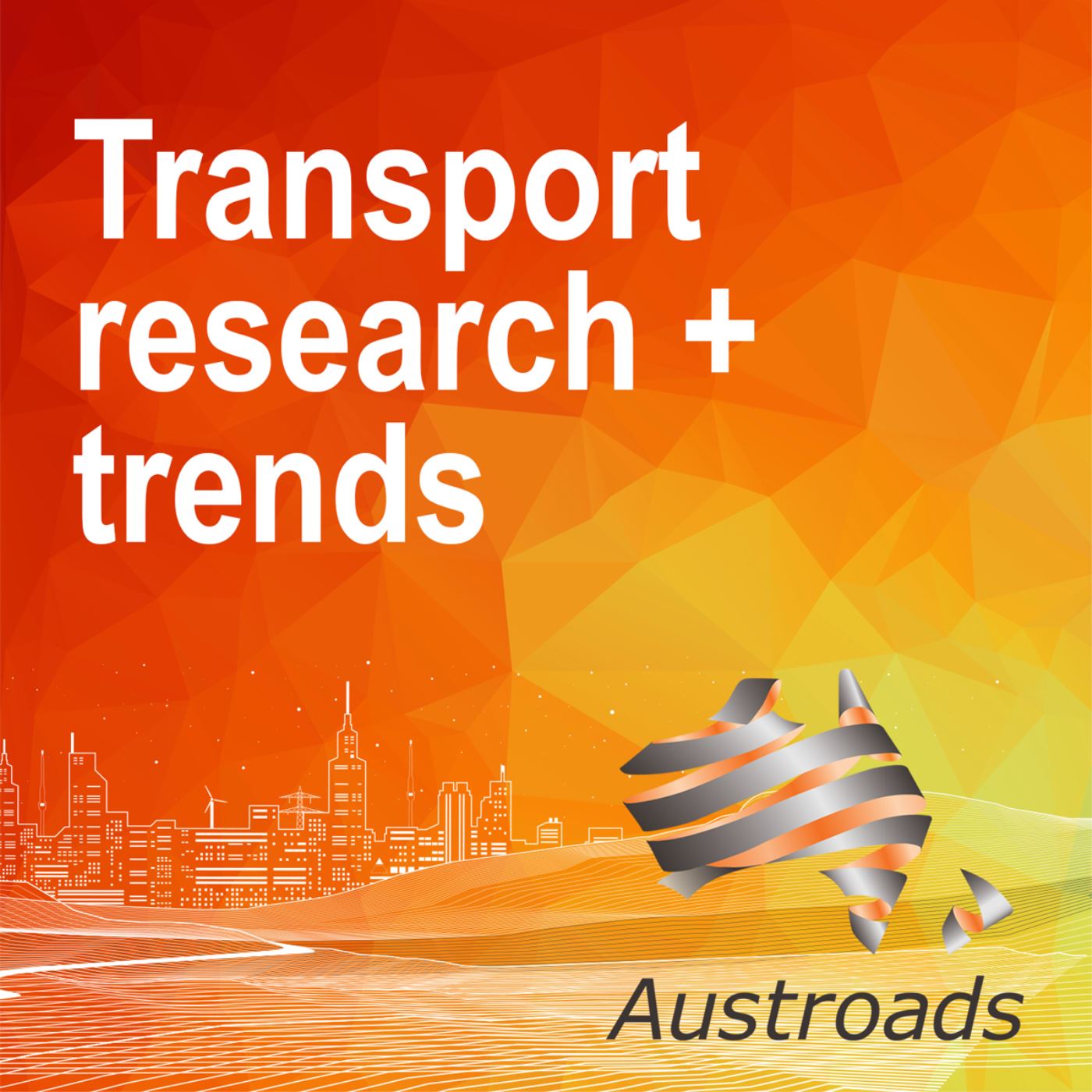Episodes

Tuesday Oct 18, 2022
Using Business Intelligence Tools in Road Asset Management
Tuesday Oct 18, 2022
Tuesday Oct 18, 2022
Road agencies are increasingly utilising various business intelligence tools to collect, process and analyse large amounts of asset management data from internal and external systems. Harnessed information is used to maintain road assets and improve the efficiency of their performance.
In this webinar data practitioners from the Tasmanian Department of State Growth, Queensland Department of Transport and Main Roads and Main Roads Western Australia talk about their experience in using digital data analytics tools for improving the accessibility and visualisation of data in road asset management.
Norah Weatherby’s presentation focuses on the Queensland Department of Transport and Main Roads’ asset information systems and analytics platforms that are critical to supporting Queensland’s road network.
David Deacon shares how the Tasmanian Department of State Growth’ Roads Asset Management Branch works with data to enable effective decision-making, break down silos and connect people.
Shaan Ciantar, from Main Roads Western Australia, talks about Power BI’s Pavelytics, an interactive app that displays relevant data to asset and maintenance managers on selected road sections. Shaan’s presentation goes through the need for such an app, how it was scoped for maximum usability, the data-design process, and finally a demonstration of the app in use.
Nicholas Archer presents a novel approach to mapping road data for Main Roads Western Australia using a custom Power BI visual and web service.
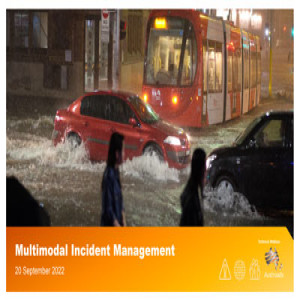
Tuesday Sep 20, 2022
Multimodal Incident Management
Tuesday Sep 20, 2022
Tuesday Sep 20, 2022
Road agencies increasingly recognise the value of coordination and cooperation with public transport operators in responding to road and transport incidents, as it helps support a more holistic and integrated multimodal approach to minimising traveller disruption.
Austroads has developed guidance for road-focused agencies to improve their capabilities in the management and resolution of an unplanned incident that negatively impacts, or has the potential to impact, the normal operation of more than one transport mode.
This webinar, presented by David Yee and Andrew Somers, provides an overview of the multimodal incident management (MMIM) research findings and agency guidance. The guidance examines worldwide MMIM methods and practices, and identifies key themes and principles for agencies to consider in planning and developing their MMIM capabilities. These themes include vision and strategy for MMIM, coordination and cooperation, integrated operations centres, leverage existing practices, integrated traveller information, traveller demand management and network load balancing, alternative transport services, multimodal data exchange, MMIM tools, and intelligence and decision making.
The webinar also offers advice on how to improve MMIM capabilities using a MMIM Capability Framework that consists of three components:
- a set of MMIM capabilities
- a MMIM Capability Maturity Model
- guidance
The capabilities are the foundational abilities that should be developed. The Capability Maturity Model is a maturity scale for MMIM capabilities that can be used by agencies to set future targets and to measure against. The guidance advises how to use the Capability Maturity Model to plan and improve MMIM capabilities.
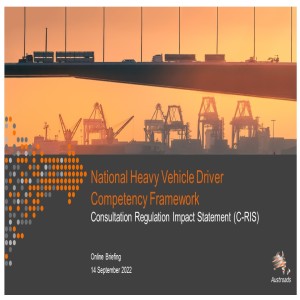
Wednesday Sep 14, 2022
NHVDCF Consultation RIS Online Briefing
Wednesday Sep 14, 2022
Wednesday Sep 14, 2022
Austroads is encouraging drivers, employers and trainers to have their say on proposed changes to heavy vehicle driver licensing in Australia.
The changes are documented in a Consultation Regulation Impact Statement (C-RIS) which seeks feedback on proposed changes to the National Heavy Vehicle Driver Competency Framework. The Framework was endorsed by ministers in 2011 but has only been implemented in four states and territories.
At the request of transport ministers, Austroads has been undertaking an extensive program of work to review and improve the NHVDCF.
Austroads’ review aims to deliver a harmonised Australian licence training and assessment framework that produces safe and competent heavy vehicle drivers and reflects the current and future needs of heavy vehicle operators and the future freight task.
Visit austroads.info/c-ris to download the C-RIS, access fact sheets and videos summarising the proposals and provide feedback.
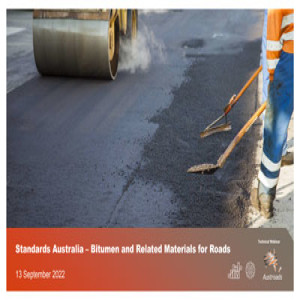
Tuesday Sep 13, 2022
Standards Australia – Bitumen and Related Materials for Roads
Tuesday Sep 13, 2022
Tuesday Sep 13, 2022
In Australia and New Zealand, bituminous binders used in road construction are tested prior to use to ensure they will perform satisfactorily during road construction/maintenance. Some of the Australian Standards that are used for these tests have not been updated for 25 years which can make it difficult for testing laboratories to adhere to them.
In this webinar Dr Robert Urquhart presents an overview of an Austroads project which provided expert technical input into the revision of seven Australian Standards – four bituminous emulsion, one polymer modified binder and two cutback bitumen related Australian Standard test methods. They were revised by the Australian Standards Committee CH-025 ‘Bitumen and related products for roadmaking’ between August 2020 and September 2022.
Following topics are covered in the session:
- the process used to update an Australian Standard
- the main changes to each of the seven Standards
- the status of revision of each Standard

Thursday Aug 25, 2022
Sustainable Road Tunnels
Thursday Aug 25, 2022
Thursday Aug 25, 2022
Road tunnels are an important element of the transport infrastructure, requiring significant resources and energy to construct, operate and maintain. Consequently, they are potentially a major source of greenhouse gas emissions and environmental pollution.
Practices and methods that promote the sustainability of road tunnels are, therefore, necessary for alleviating the pressure they exert on scarce resources and the natural environment. However, sustainability is not about what should be done for the environment, it is something that must be done to preserve the quality of all life on the planet. It is particularly important for a road tunnel compared to a road at grade as a road tunnel has a substantially higher carbon footprint, both during its construction and the continuous operation of its systems throughout its operating life.
Every state and territory in Australia, as well as New Zealand, has committed to net zero emissions by 2050. In this context, responsible organisations have an obligation to reduce the sustainability impacts of delivering and operating road tunnels whose asset life is expected to extend beyond 2050.
In this webinar, Georgia O’Connor, Les Louis and Tony Peglas give an overview of the research undertaken to include updates for sustainability in the four parts of the Austroads Guide to Road Tunnels (AGRT).
The research presented in the session will provide owners, operators, designers and those constructing tunnels with guidance on how to achieve more sustainable outcomes at each stage of a road tunnel’s life cycle.
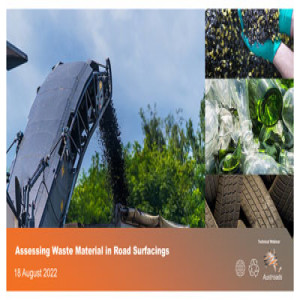
Thursday Aug 18, 2022
Assessing Waste Material in Road Surfacings
Thursday Aug 18, 2022
Thursday Aug 18, 2022
Governments, transport agencies, and industry have identified the need to reduce waste going to landfill and increase the use of recycled materials to achieve more sustainable development and improve outcomes for communities. The latest update to the Guide to Pavement Technology Part 4E: Recycled Materials covers the advancement in material re-use that has occurred in the 13 years since the 2009 version of the guide was published.
There is wide concern around the misuse of recycled materials in road construction, and it is generally agreed that roads should not be viewed as alternative avenues for waste disposal. A protocol has been established that follows a step-by-step process for quantifying the effect of using novel, post-consumer and industrial wastes or recycled materials in asphalt pavements and sprayed seal surfacings.
This webinar covers the following key updates made to the Austroads Guide to Pavement Technology Part 4E: Recycled Materials:
- Latest and emerging recycled materials utilised within pavements and information on their use in specific applications as well as associated issues, risks, and considerations.
- The developed holistic assessment framework for the use of recycled materials in road pavements.
- The developed protocol for asphalt and sprayed seals that establishes a step-by-step process for quantifying the effect of using novel, post-consumer and industrial wastes or recycled materials.
The webinar is presented by Phil Herrington from WSP New Zealand, Brody Clark from WSP Australia with participation of Grant Bosma from Waka Kotahi NZ Transport Agency and Mike Pickering from the Queensland Department of Transport and Main Roads.

Tuesday Aug 02, 2022
Using the New Edition of the Guide to Road Design Part 6
Tuesday Aug 02, 2022
Tuesday Aug 02, 2022
Austroads has updated the Guide to Road Design Part 6: Roadside Design, Safety and Barriers (AGRD Part 6) introducing new sections on the fundamentals of safety barrier systems and design advice for other road safety devices.
This webinar, presented by Dr Rod Troutbeck and Richard Fanning, focuses on the updated Section 6 providing an overview of the process to design the installation of a safety barrier.
The session describes the actions for defining the context of the installation including choosing an appropriate containment level. It also outlines the preliminary design tasks of selecting a barrier and defining its lateral and longitudinal position.
The aspects of detailed design are also described, including the installation refinements, selecting the appropriate terminal or transition and the structural design of a proposed barrier. Finally, the webinar briefly describes the documentation of the design.
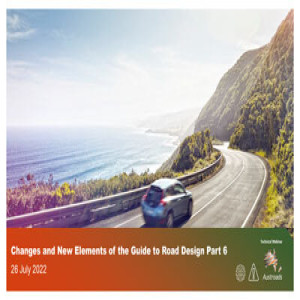
Tuesday Jul 26, 2022
Changes and New Elements of the Guide to Road Design Part 6
Tuesday Jul 26, 2022
Tuesday Jul 26, 2022
Austroads has updated the Guide to Road Design Part 6: Roadside Design, Safety and Barriers (AGRD Part 6) introducing new sections on the fundamentals of safety barrier systems and design advice for other road safety devices.
This webinar, presented by Dr Rod Troutbeck and Richard Fanning, covers the new structure of AGRD Part 6 and new information included as part of the current guide update focusing on the following sections:
- Section 4: Treatment Options, including options for consideration for a number of relatively common hazards
- Section 5: Fundamentals of Safety Barrier Systems, including information to assist users to make informed decisions when selecting a barrier system for a particular site
- Section 6: Road Safety Barriers, including design process.
The webinar also provides details and the research background to a number of new concepts and processes that have been included in AGRD Part 6. These include barrier flexibility as a measure of their performance, the use of working width rather than deflection, the need to choose an appropriate containment level, the use of a new concept of the departure points of redirection, the placement of barriers behind kerbs, a revised method to calculate the length of need, the need to install barriers in appropriate soils and the orientation of barriers on superelevated roadways.

Thursday Jul 21, 2022
Guidance to Support Cloud Connected Road Users
Thursday Jul 21, 2022
Thursday Jul 21, 2022
Road users are increasingly recognising the value of data for improved mobility and safety. Austroads Cloud Connected Road User (CCRU) project studied how agencies can support cloud-connected road users through data from portable and fixed in-vehicle devices to assist with trip planning, and warning and advice when travelling. The project examined various CCRU data provision methods and practices in the EU, USA, Australia, and New Zealand to provide agencies with guidance on how to manage, enhance, and deliver data to CCRUs.
This webinar, presented by Vibeke Matthews and David Yee, provides an overview of the various business models that may be used by agencies to support the CCRU ecosystem. It addresses the potential range of agency involvement across the key roles of CCRU data gatherer, data provider and data presenter that may be employed depending on the business model adopted for each data type.
The webinar also offers advice on how to manage the six key data function areas that are critical to supporting CCRUs. These include managing data foundations, governing data, planning and designing data, enabling and maintaining data, using data; and, if presenting data directly to road users, managing road user apps and websites. The outputs of this project will form the foundation of data support requirements for future CAVs.

Tuesday Jun 28, 2022
Tuesday Jun 28, 2022
This webinar, presented by Austroads Temporary Traffic Management Project Manager Chris Koniditsiotis and AITDSA Workstream Manager Gavin Hill, is an overview of the Austroads Innovative Temporary Traffic Management Device and Solution Assessment (AITDSA) scheme (commencing 1 July 2022).
AITDSA provides a way for innovative devices and solutions used for temporary traffic management to be assessed and recognised by Austroads members throughout Australia and New Zealand.
AITDSA responds to the emergence of new technologies, innovative solutions, and devices that can be used to improve safety at mobile and static work sites that perform a diverse range of functions, including:
- regulating traffic (i.e., to assign priority and indicate regulations in force)
- informing motorists of hazards or regulatory controls ahead
- warning of temporary hazards that could endanger motorists or workers and plant engaged in work on the road.

